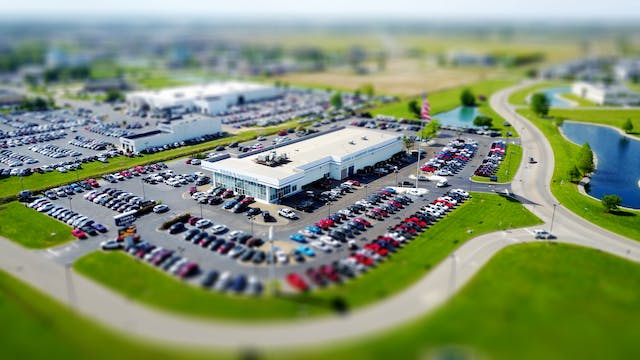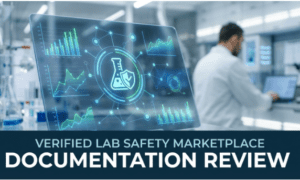In the dynamic world of business, owning a fleet-operated enterprise is akin to navigating a complex labyrinth of financial decisions and strategic planning. The allure of such ventures lies in their potential for scalability and efficiency, yet they come with a unique set of fiscal challenges and considerations. This article delves into the multifaceted financial landscape of fleet-operated businesses, exploring the depths of initial capital investments, the ongoing saga of maintenance costs, the revolutionary impact of technology, the often-overlooked realm of employee training, and the pivotal decision between leasing and owning vehicles. Our journey through these aspects aims to provide a comprehensive understanding, aiding entrepreneurs and business leaders in making informed decisions that align with their financial goals and operational needs.
Discussing Initial Capital Investments in Fleet-Operated Businesses
Embarking on the journey of establishing a fleet-operated business is akin to setting sail on a vast ocean, where the initial capital investment is your vessel. This investment is not merely a financial transaction but a foundational decision that shapes the future of the enterprise. It encompasses a range of expenses, from purchasing vehicles to setting up operational infrastructure. The magnitude of this investment varies based on the scale and scope of the business, yet it remains a significant determinant of future success.
When considering the types of vehicles for a fleet, one must navigate a sea of options. Cars and motorcycles, each with their unique advantages, demand careful consideration. Cars, often the backbone of a fleet, offer versatility and capacity, making them suitable for a wide range of businesses. However, their cost extends beyond the sticker price, encompassing insurance, registration, and customization for business needs.
Motorcycles, on the other hand, present a different financial equation. While generally less expensive than cars, they offer distinct advantages in terms of fuel efficiency and maneuverability, particularly in urban settings. However, their maintenance and operational costs, along with safety equipment expenses, add layers to the financial planning process.
Other costs to consider when establishing a fleet for your business can include car and motorcycle transport costs. Especially for businesses operating in multiple jurisdictions. By partnering your business with an auto transport company, you can scale faster, experience less downtime, and even protect yourself by letting a professional company handle the risks of transporting your company vehicles across the country.
The investment in vehicles is just the tip of the iceberg. Additional costs lurk beneath the surface, including storage facilities, operational technology, and administrative setup. These expenses, often underestimated, can significantly impact the overall capital requirement. It’s crucial to approach this investment with a comprehensive budget that accounts for both visible and hidden costs.
Moreover, the decision to buy new or used vehicles adds another dimension to the financial planning. New vehicles, with their warranties and latest features, offer reliability and efficiency but come with a higher price tag. Used vehicles, while more budget-friendly, might lead to increased maintenance costs down the line.
The financial planning for a fleet-operated business must also consider the cost of scaling. As the business grows, the fleet needs to expand, requiring additional capital. This scalability factor should be integrated into the initial investment plan to ensure long-term viability.
The initial capital investment in a fleet-operated business is a multifaceted undertaking. It requires a balance between immediate needs and future growth, a careful selection of vehicles, and a thorough understanding of both direct and indirect costs. This foundation sets the stage for the ongoing financial journey of the business.
Calculating Fleet Maintenance and Management Costs Over Lifetime
Once the fleet is operational, the focus shifts to the ongoing saga of maintenance and management. This continuous financial commitment is crucial for the smooth running and longevity of the fleet. Regular maintenance not only ensures the functionality of the vehicles but also plays a vital role in safety and efficiency.
The cost of maintenance varies widely, influenced by factors such as vehicle type, usage intensity, and environmental conditions. Routine maintenance includes regular check-ups, oil changes, tire rotations, and addressing wear and tear. These costs, while seemingly minor, accumulate over time and form a significant portion of the operational budget.
Beyond routine maintenance, unexpected repairs and replacements add an element of financial unpredictability. Vehicles are susceptible to breakdowns and damages, which can lead to costly repairs. Allocating a contingency fund for such unforeseen expenses is a prudent financial strategy.
Management costs encompass a range of expenses beyond the physical upkeep of the fleet. These include administrative tasks such as licensing, insurance, and compliance with regulatory requirements. The complexity of managing a fleet necessitates a dedicated team or system, adding to the operational costs.
Fuel consumption represents a major recurring expense for fleet-operated businesses. The cost of fuel fluctuates and can significantly impact the overall operational budget. Implementing fuel-efficient practices and considering alternative fuel vehicles can mitigate this expense.
Depreciation is an often-overlooked aspect of fleet management. Vehicles lose value over time, impacting the financial health of the business. Effective management strategies, such as timely upgrades and maintenance, can help in optimizing the resale value of the fleet.
The maintenance and management of a fleet demand a comprehensive financial strategy. It involves balancing routine upkeep, managing unexpected repairs, administrative costs, fuel expenses, and depreciation. This ongoing financial commitment is integral to the sustainability and profitability of the fleet-operated business.
Technology Integration and Automation
In the modern era, technology integration and automation have become pivotal in transforming fleet-operated businesses. The adoption of cutting-edge technologies not only enhances operational efficiency but also provides significant financial benefits. This integration, however, comes with its own set of costs and considerations.
The initial investment in technology can be substantial. This includes the cost of acquiring fleet management software, GPS tracking systems, and other digital tools. These technologies enable real-time monitoring of vehicles, optimized route planning, and efficient resource allocation, leading to cost savings in the long run.
Automation in fleet operations reduces the reliance on manual processes, minimizing human error and increasing productivity. Automated systems for scheduling, maintenance alerts, and reporting streamline operations, but they require upfront investment in software and training.
Data analytics, a crucial component of modern fleet management, offers deep insights into operational efficiency. By analyzing data on vehicle usage, fuel consumption, and driver behavior, businesses can identify areas for cost reduction and performance improvement. However, harnessing the power of data analytics requires investment in sophisticated tools and skilled personnel.
Cybersecurity is an essential consideration in technology integration. As fleet operations become increasingly digital, the risk of cyber threats grows. Investing in robust cybersecurity measures is not just a technical necessity but a financial imperative to protect the business from potential losses due to data breaches or cyber attacks.
The ongoing cost of technology maintenance and upgrades is an important factor in financial planning. Technology evolves rapidly, and keeping the systems up-to-date requires continuous investment. This includes software updates, hardware upgrades, and training employees on new features.
In essence, technology integration and automation in fleet-operated businesses offer a path to enhanced efficiency and cost savings. However, this path requires careful financial planning, considering the initial investment, ongoing maintenance costs, and the need for cybersecurity measures. The long-term benefits of technology adoption, though, often outweigh the initial financial outlay.
Employee Training and Development Expenses
The human element in fleet-operated businesses is as crucial as the mechanical and technological aspects. Investing in employee training and development is not just a regulatory requirement but a strategic financial decision that impacts the overall performance and profitability of the business.
Driver training programs are fundamental in ensuring safety and efficiency. These programs cover safe driving practices, vehicle handling, and emergency response. While the cost of training might seem like an additional expense, it significantly reduces the risk of accidents and associated costs.
Beyond driving skills, training in technology usage is essential in the modern fleet business. As technology becomes integral to operations, ensuring that employees are proficient in using fleet management software and digital tools is crucial. This training requires both time and financial resources but leads to better utilization of technology and improved operational efficiency.
Employee development programs, focusing on skills such as communication, teamwork, and leadership, contribute to a more effective and cohesive workforce. These programs, while requiring investment, foster a positive work environment and enhance employee retention, ultimately benefiting the financial health of the business.
Compliance training is another critical area. Fleet-operated businesses must adhere to various regulations, and ensuring that employees are well-versed in these requirements avoids costly legal penalties and ensures smooth operations.
The cost of employee training and development should be viewed as an investment rather than an expense. Skilled and well-trained employees are the driving force behind a successful fleet-operated business, contributing to its efficiency, safety, and reputation.
Investing in employee training and development is a strategic financial decision for fleet-operated businesses. It encompasses driver training, technology proficiency, skill development, and compliance education. This investment not only enhances operational efficiency but also mitigates risks and contributes to the long-term success of the business.
Cost-Benefit Analysis of Leasing vs. Owning Vehicles
The decision between leasing and owning vehicles is a critical financial crossroad for fleet-operated businesses. This choice has far-reaching implications on cash flow, operational flexibility, and long-term financial planning. Adding to this complexity is the option of renting vehicles, which offers its own set of advantages and considerations.
Owning a fleet provides complete control over the vehicles, including customization and usage without restrictions. The upfront cost of purchasing vehicles is substantial, but ownership allows for asset accumulation. However, this option also entails full responsibility for maintenance, repairs, and eventual replacement, which can be financially burdensome.
Leasing, on the other hand, offers a more flexible financial arrangement. It typically requires a lower initial investment and includes maintenance and repair services, reducing the burden of unexpected expenses. Leases also allow businesses to upgrade to newer models more frequently, ensuring access to the latest technology and efficient vehicles.
The cost-benefit analysis of leasing versus owning extends beyond the immediate financial implications. It involves considering the long-term impact on cash flow, tax benefits, and the residual value of the vehicles. Leasing often provides tax advantages as lease payments can be considered a business expense.
Renting vehicles presents a viable option for businesses with variable vehicle needs or those looking to supplement their fleet temporarily. It offers the utmost flexibility without long-term commitments, but it can be more expensive in the long run if used extensively.
The decision between leasing, owning, or renting vehicles in a fleet-operated business involves a comprehensive analysis of financial, operational, and strategic factors. Each option has its unique advantages and drawbacks, and the choice depends on the specific needs and goals of the business. Understanding the long-term financial implications of each option is crucial in making an informed decision that aligns with the business’s overall financial strategy.
Navigating the financial landscape of a fleet-operated business is a journey filled with strategic decisions, careful planning, and continuous adaptation. From the initial capital investment to the ongoing costs of maintenance, technology integration, employee training, and the pivotal decision between leasing and owning vehicles, each aspect plays a critical role in the financial health and success of the business. Understanding these financial implications is not just about managing costs but about seizing opportunities for growth, efficiency, and long-term sustainability. As the business world evolves, so do the challenges and opportunities in fleet management. Staying informed, adaptable, and strategic in financial planning is key to steering a fleet-operated business towards a prosperous future.



































